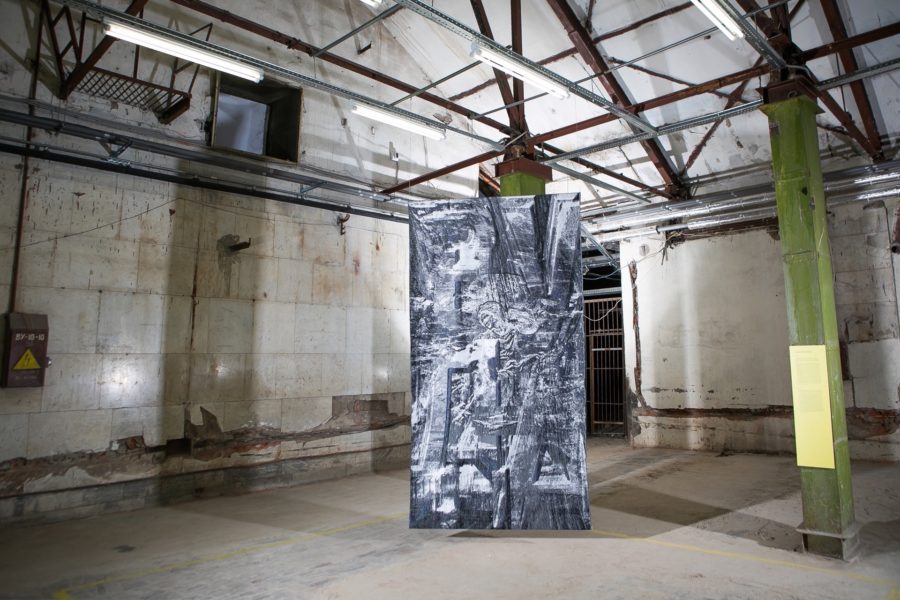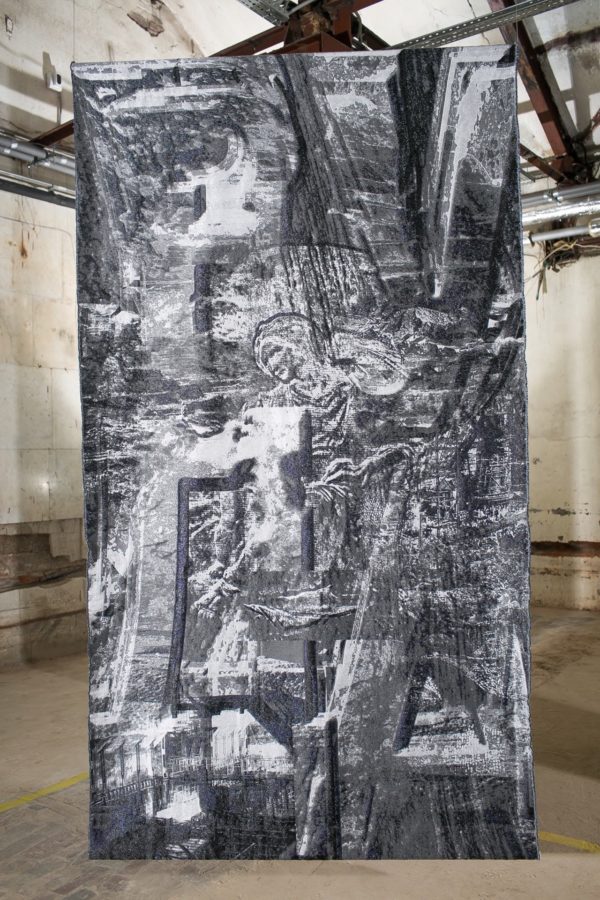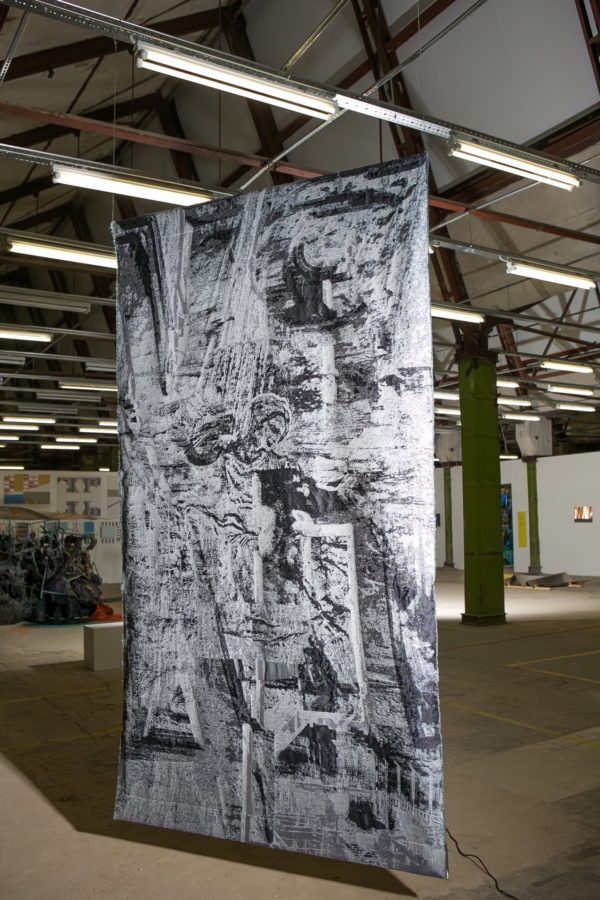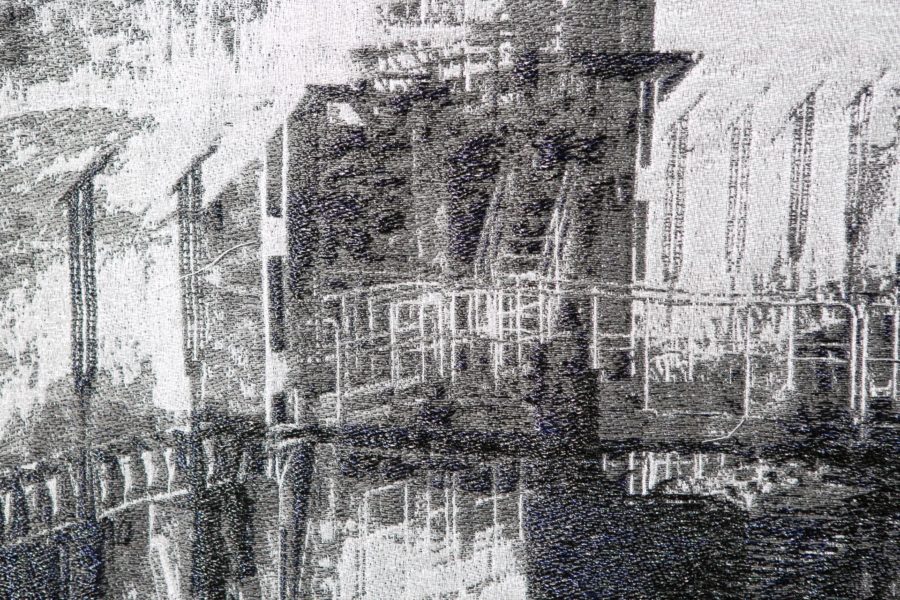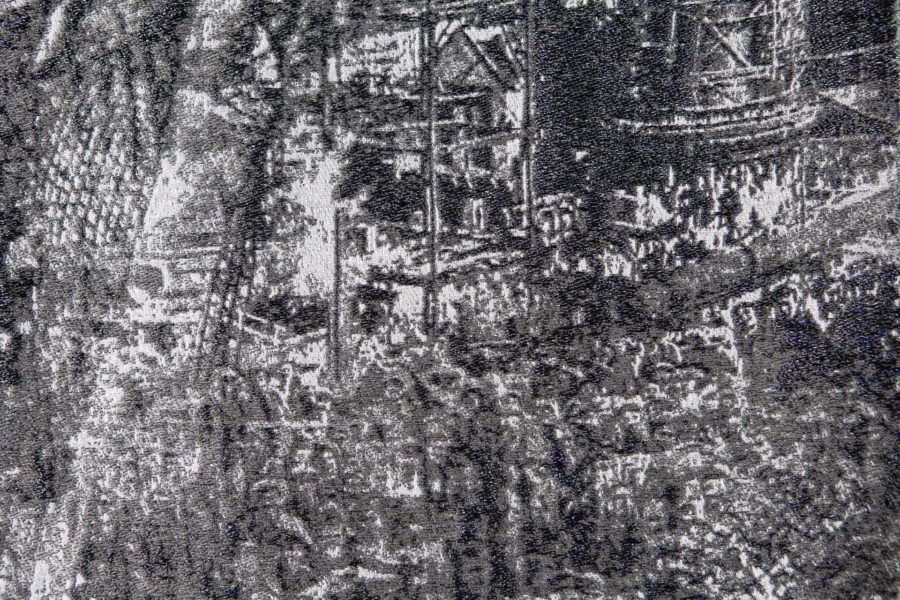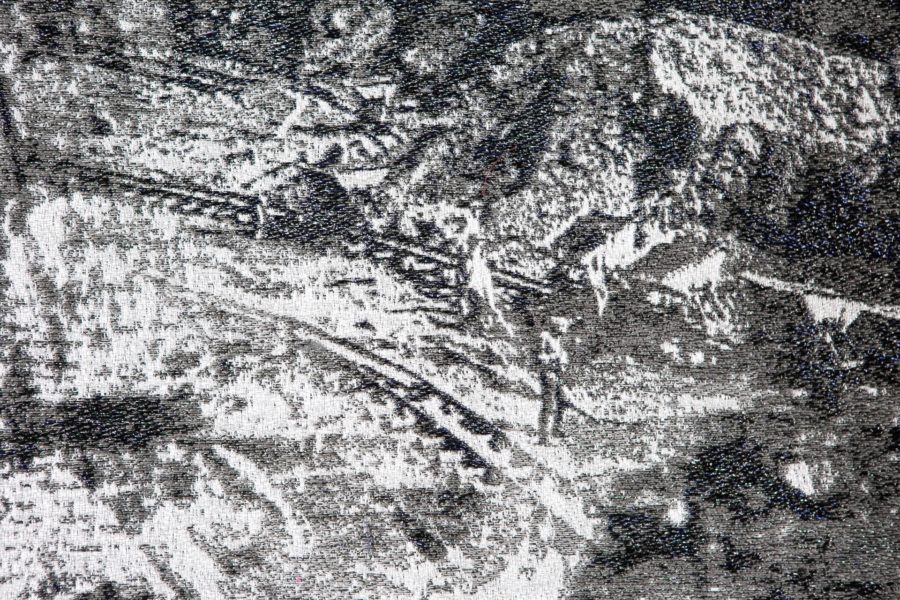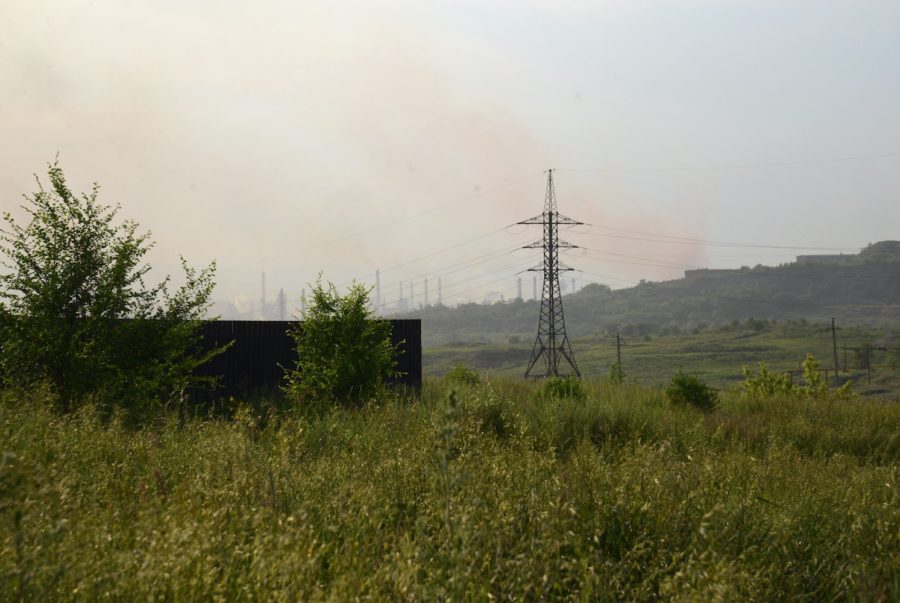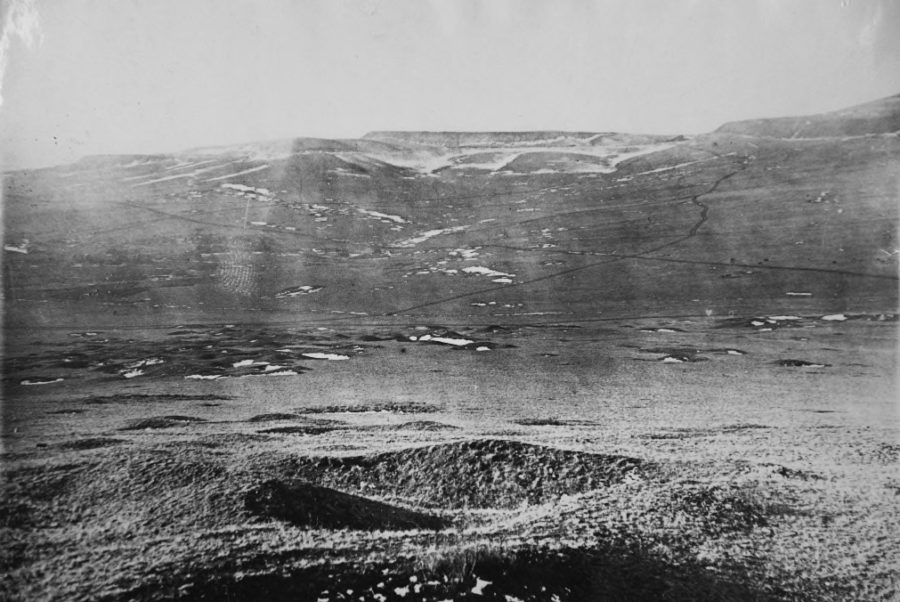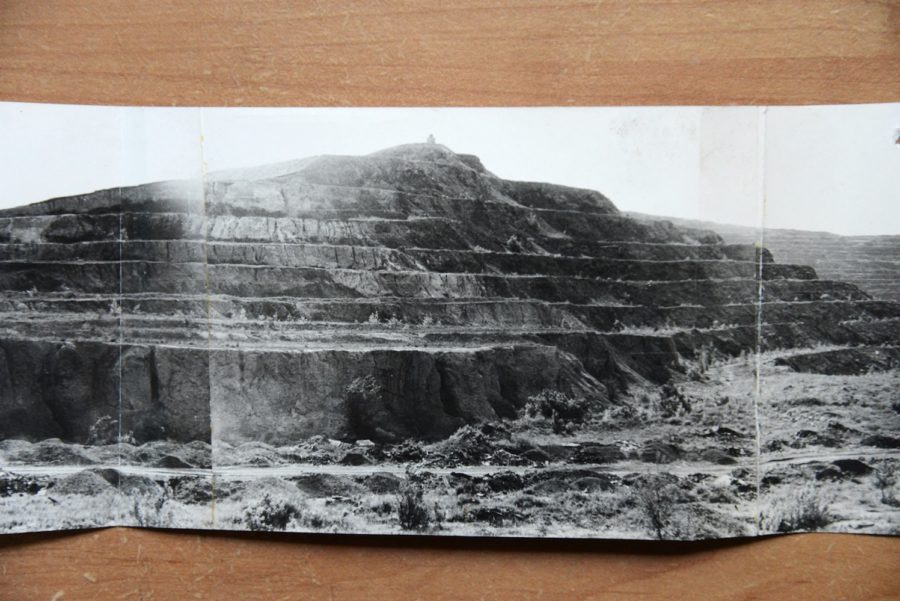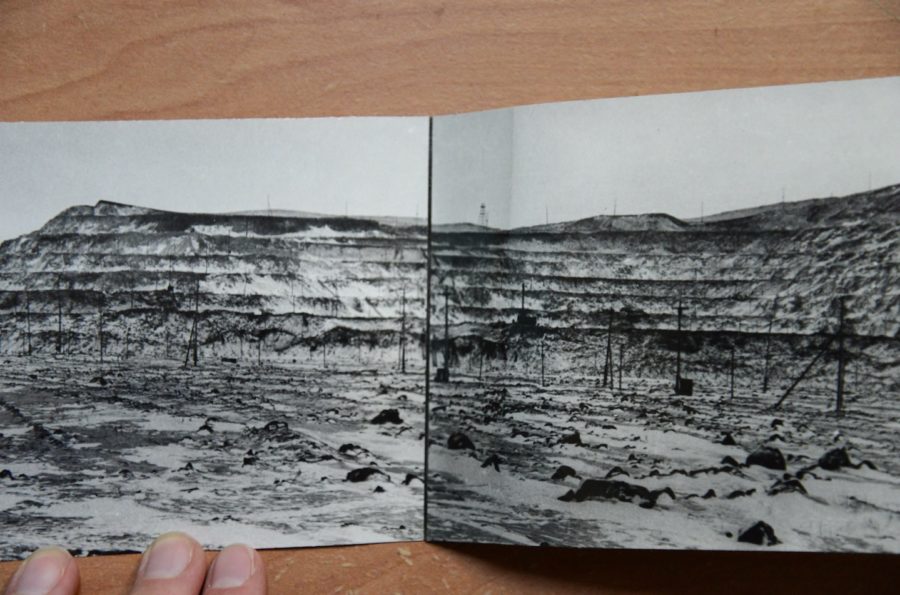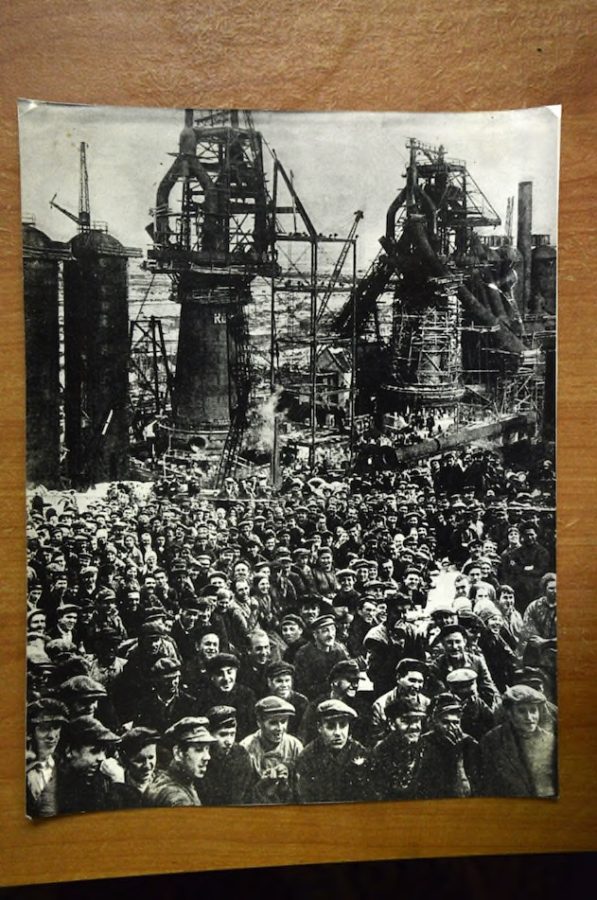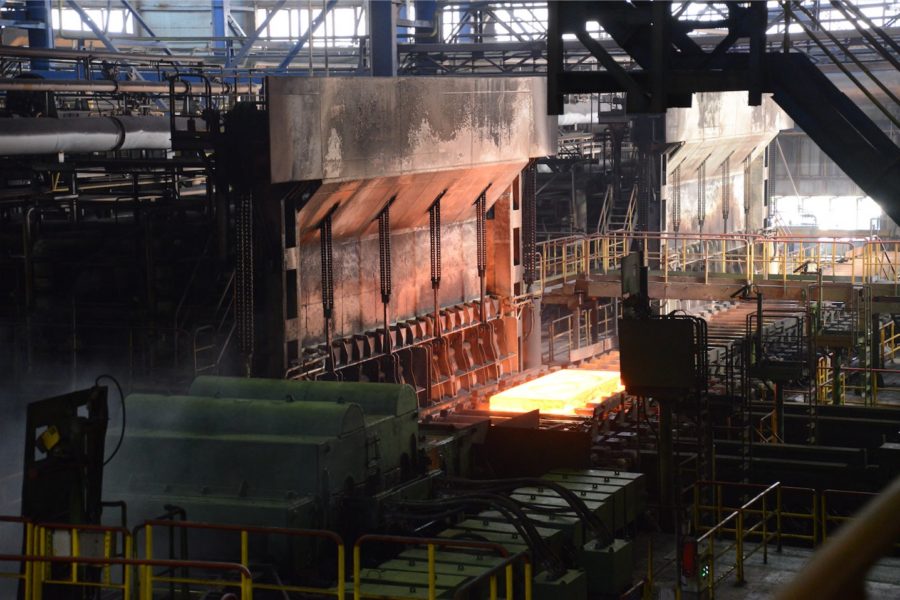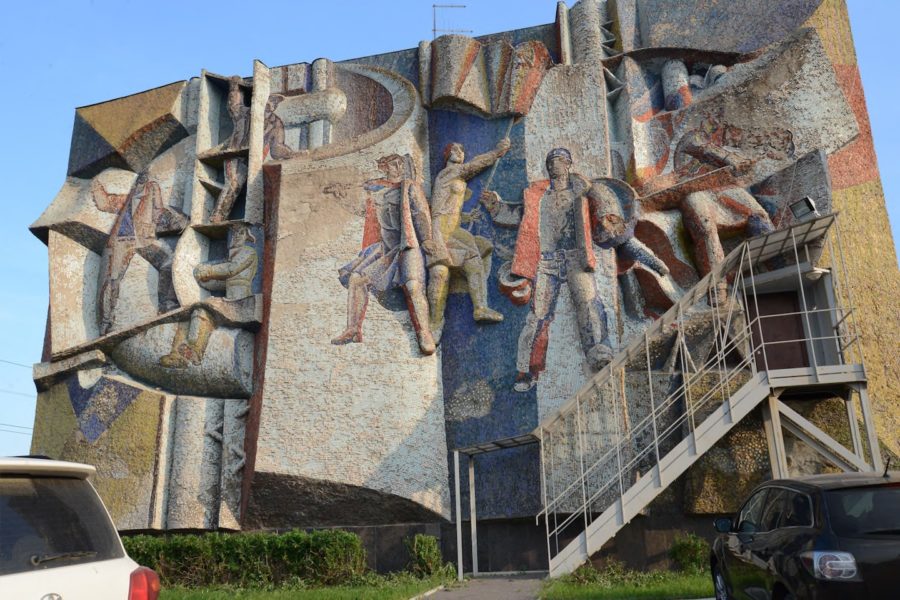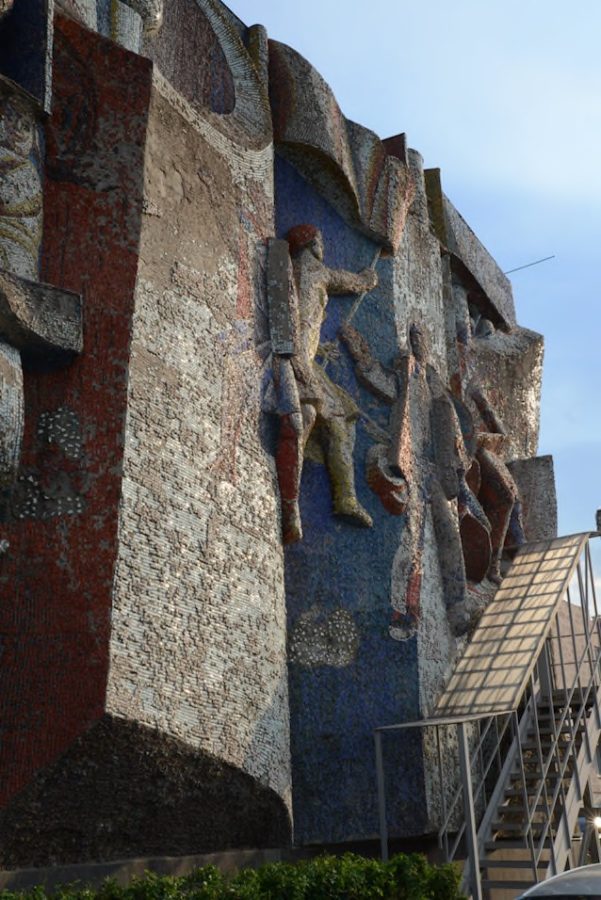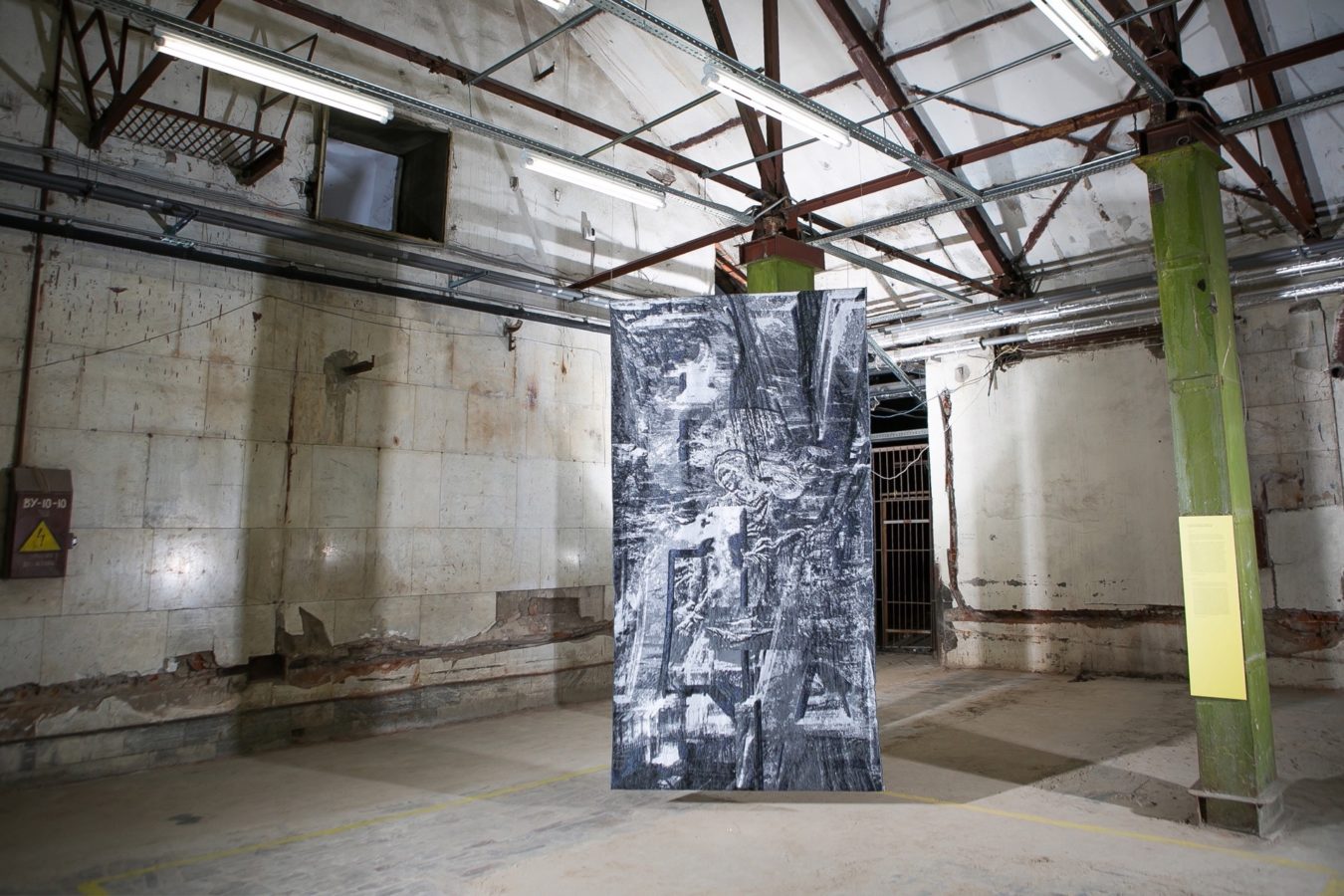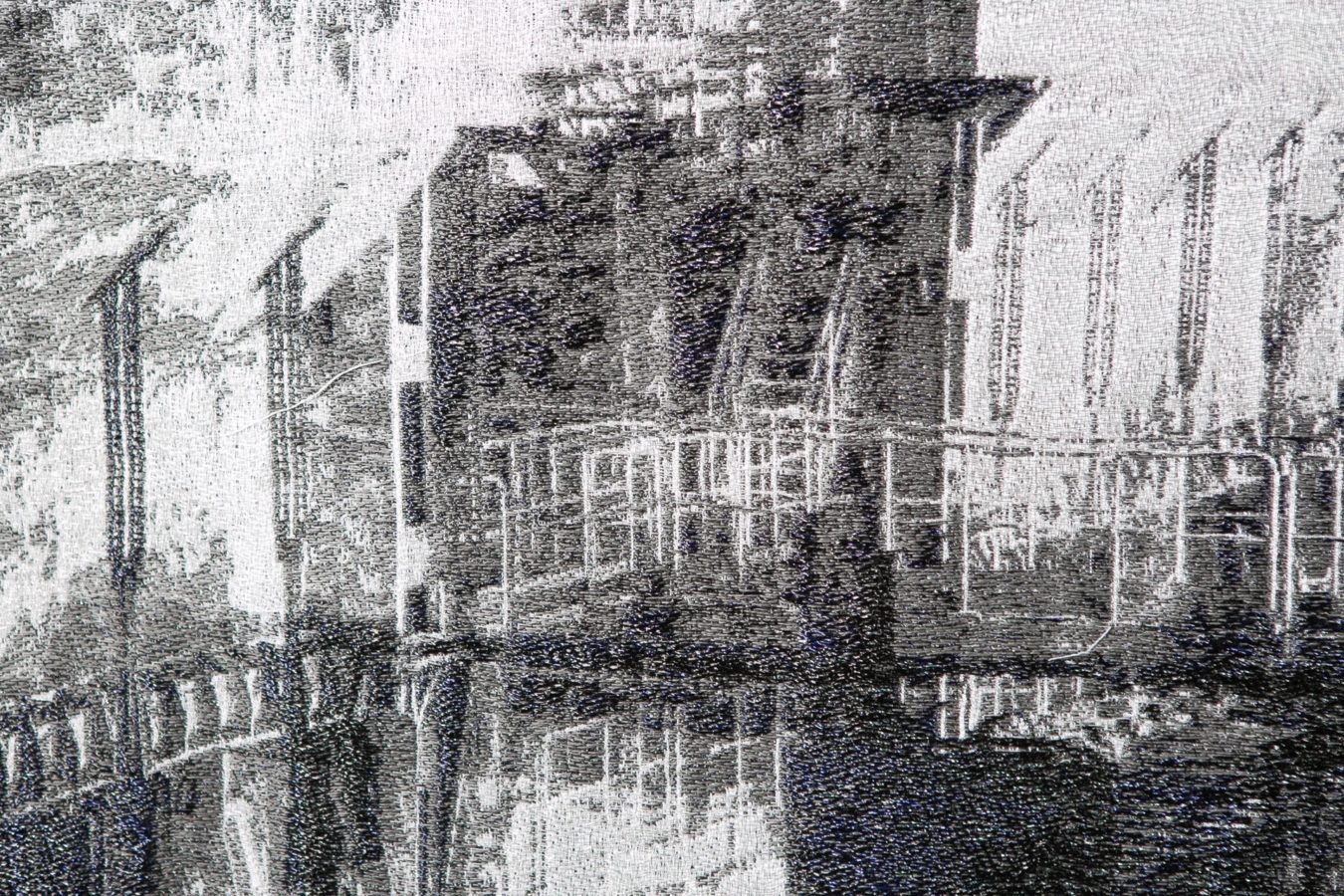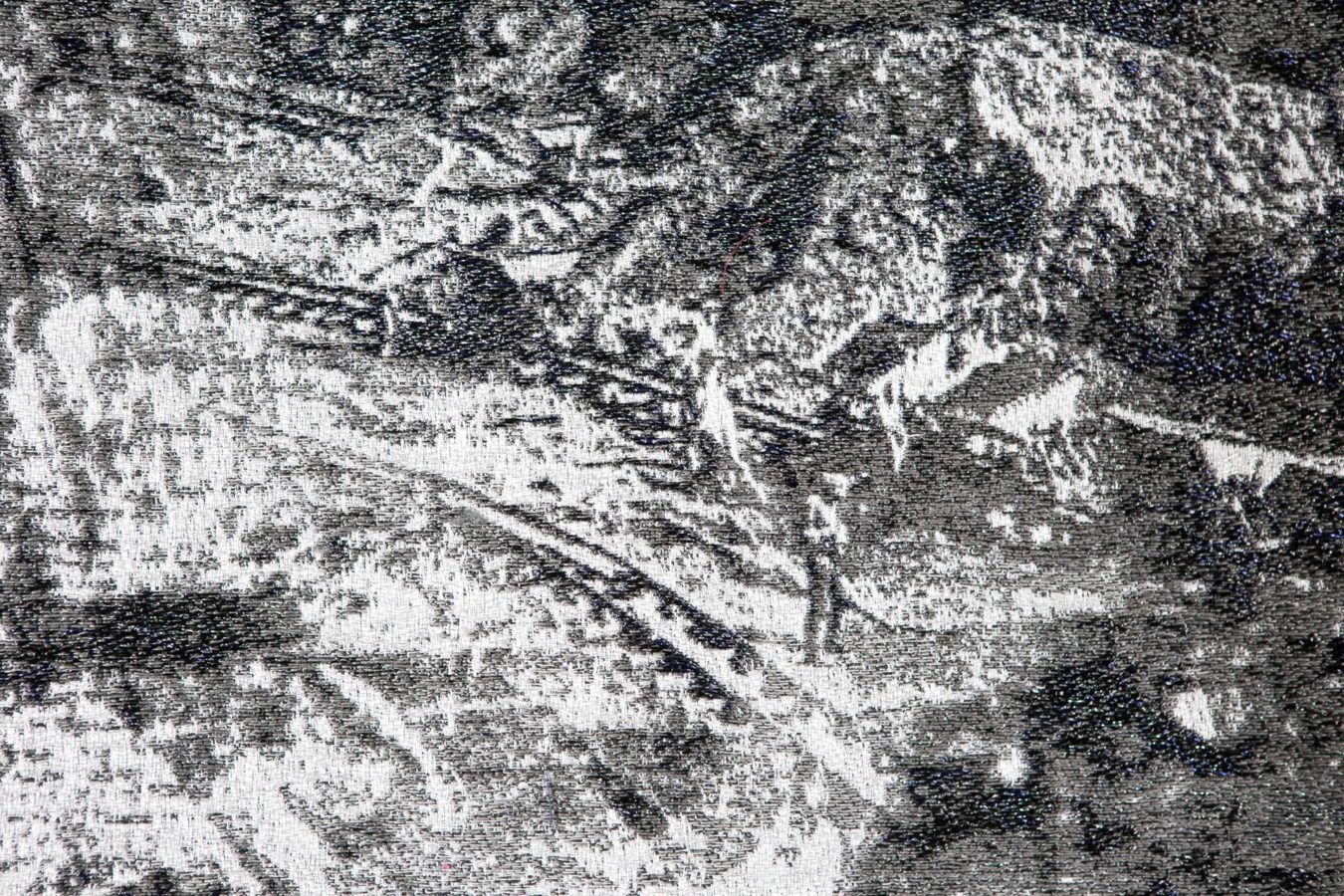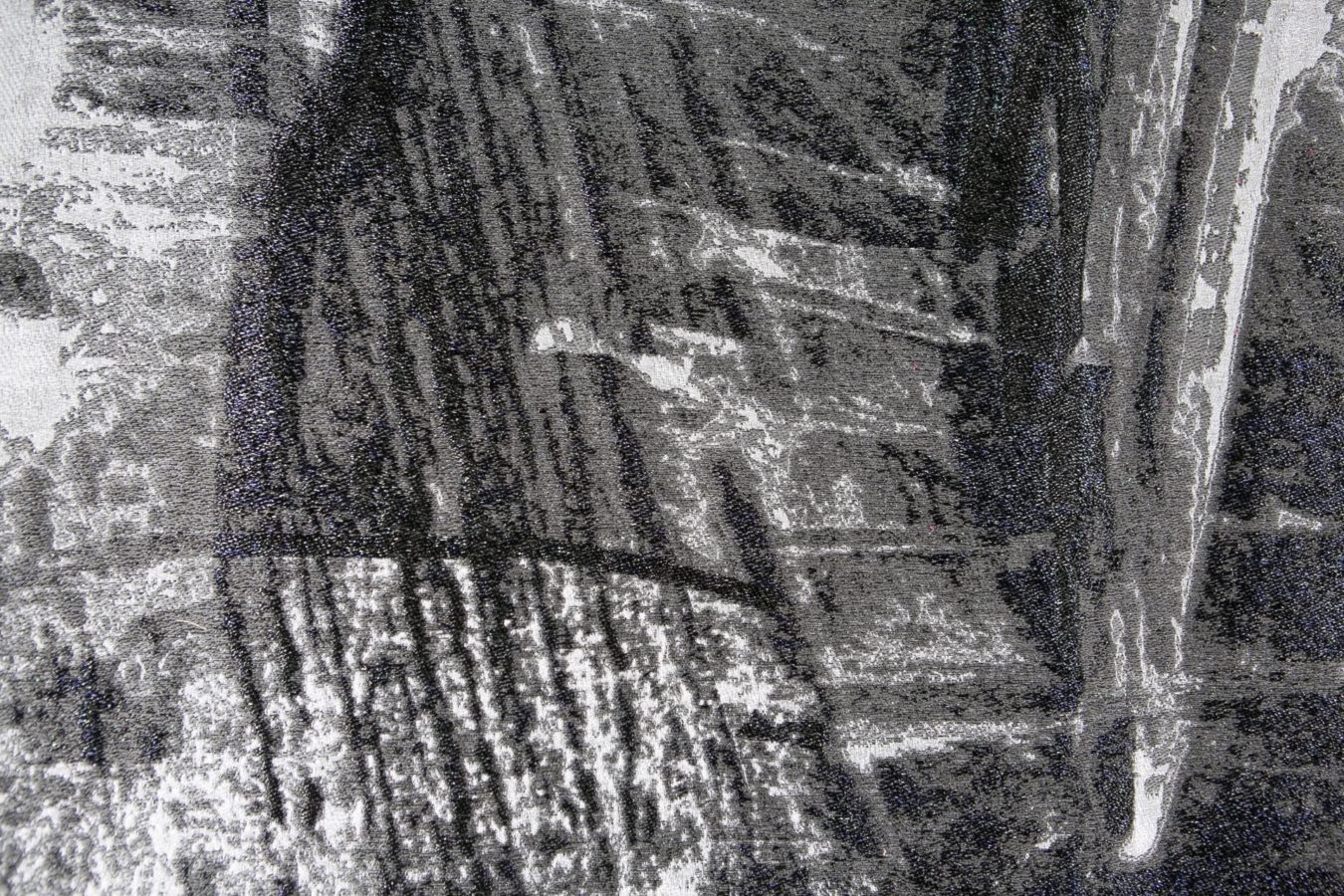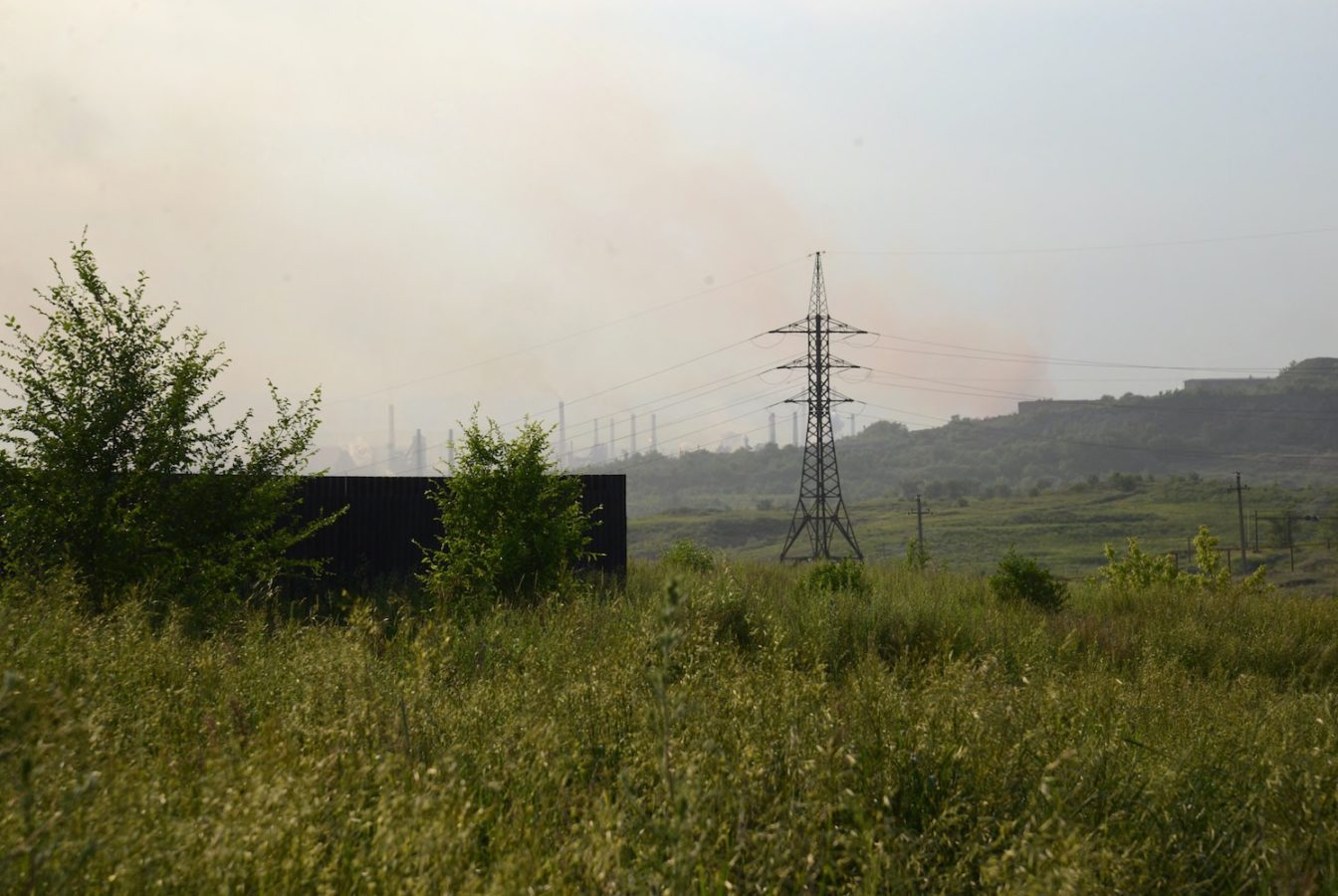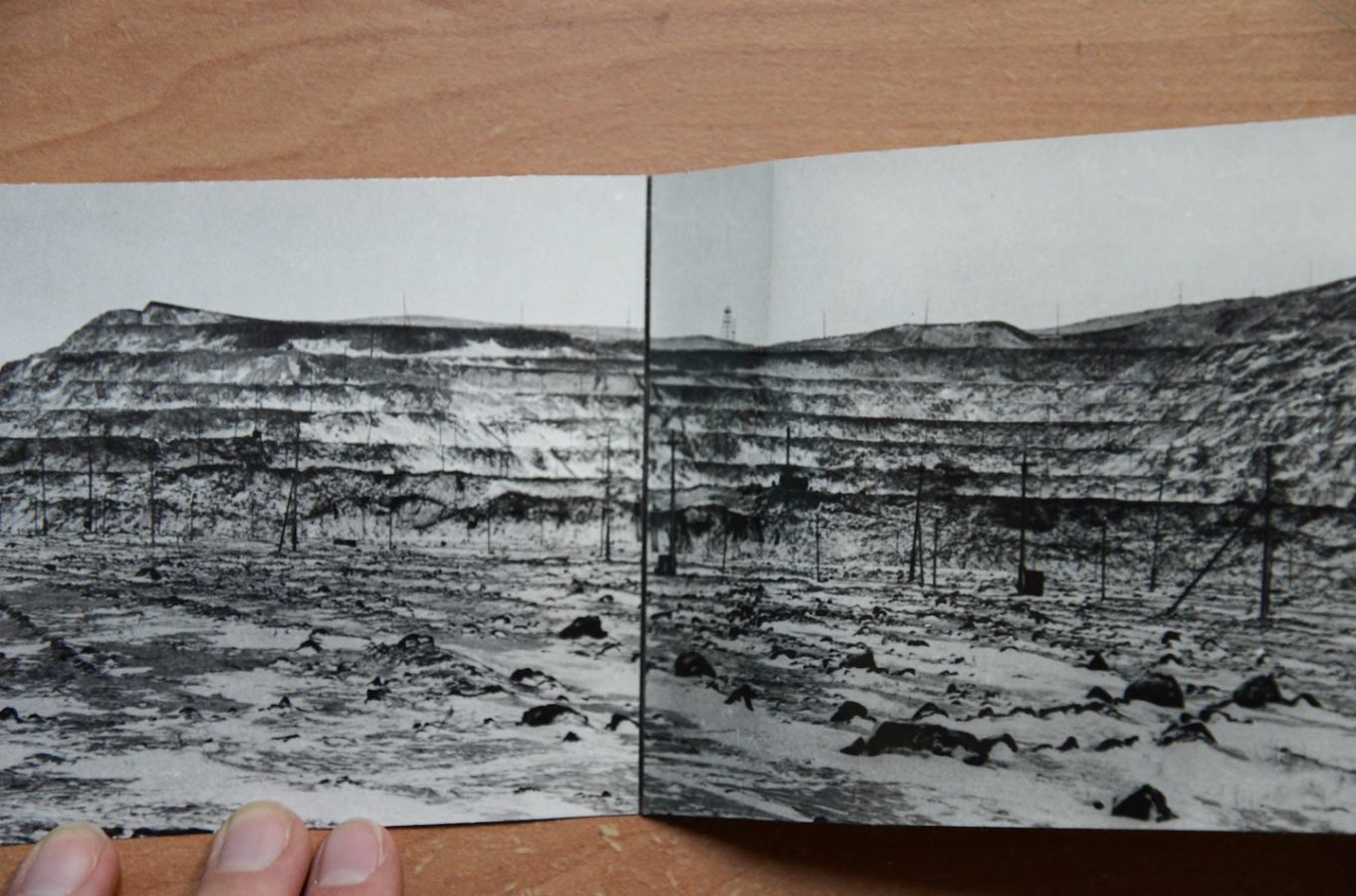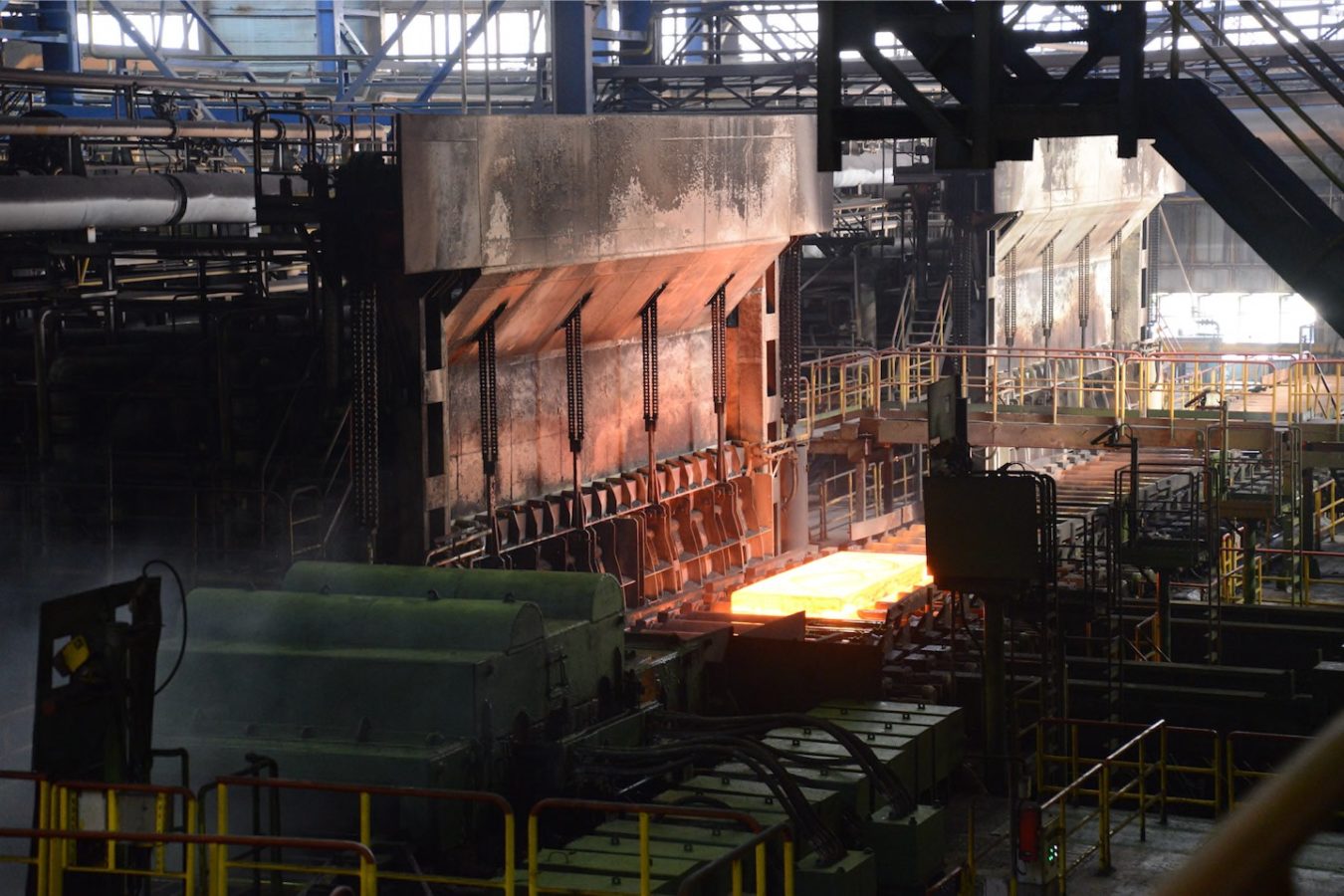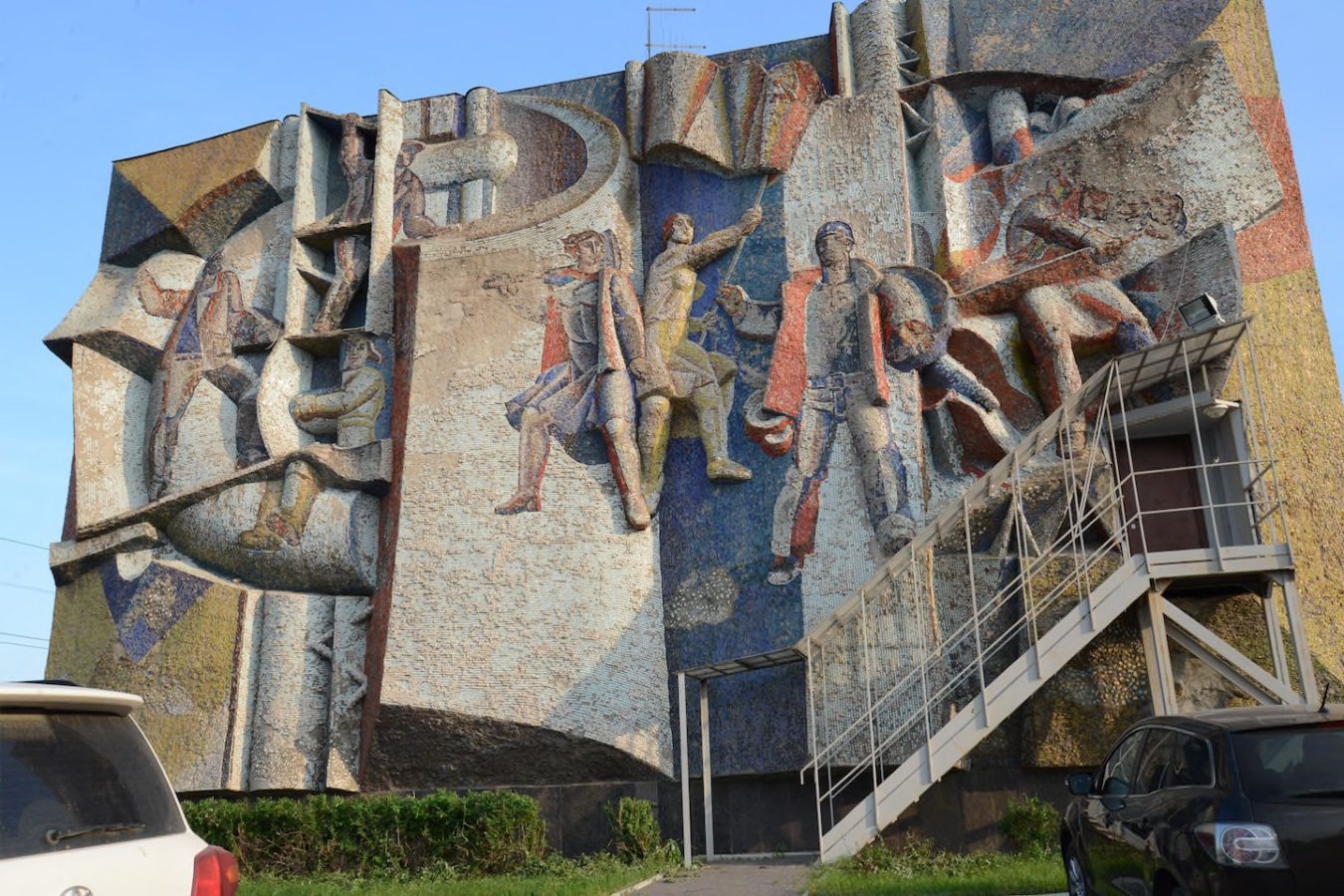Produced for NADEZHDA, an official side project of the Moscow Biennial and designed by Yu-Yeon Cho Ruda is a mohair woven tapestry – a sketch for a future relief for Magnitogorsk on the Ural River in Russia. Magnitogorsk means the city by the magnetic mountain. The city was a part of Stalin’s first five-year plan to outdo his Western counterparts in the iron and steel industry. The tapestry depicts multiple fragmented images from the early 20th century as a projection onto the mountainous landscape. Soft greys and blacks made of multiple strands of soft coloured threads give structure and texture but never a clear image of the once existing mountain depleted of its natural mineral. One can make out the Russian word Ruda meaning iron ore in relief-like lettering. On closer inspection an iron miner from the mosaic of the Palace of Culture by Boris Klotchkov appears. Rocky scenery collides with the High Renaissance landscape of Raphael’s Alba Madonna (1510) from an aerial perspective. Known as the “Madonna of Humility” due to her positioning seated on the ground, Alba Madonna was once a part of the Hermitage’s art collection in St. Petersburg. Stalin sold the devotional painting for 1,7 million to Andrew W. Mellon.[1] The steel mills were modelled after the US steel company plant in Gary, Indiana. The operating mining steel town producing 13 million tons of crude steel and 12,2 million tons of commercial steel products yearly[2] is an ecological disaster zone. Magnitogorsk gives insight to industrialization and its radical take on life and work with an irrepressible enthusiasm for progress. Kriemann’s tapestry hangs dividing the space in the room. The loose threads at each end allow for both a continuation and an unfinished state. (A. v. Girsewald)
[1] The Alba Madonna by Raphael was the world’s most expensive sold painting in the early 1930’s. It paid for half of the construction of the Soviet dream city. Susan Buck-Morris, “Dreamworlds of Mass Culture”, in Dreamworlds and Catastrophe. The Passing of Mass Utopia in East and West, (Cambridge: MIT Press, 2000), 153.
[2] See Magnitogorsk Iron and Steel Works (Магнитогорский металлургический комбинат), abbreviated at MMK: http://eng.mmk.ru/about/
Group Exhibitions
...- Nadezdha, 2015 Manufacture of Trekhgorka, Moscow Curated by: Marie Egger, Simon Mraz, Nicolaus Schafhausen
